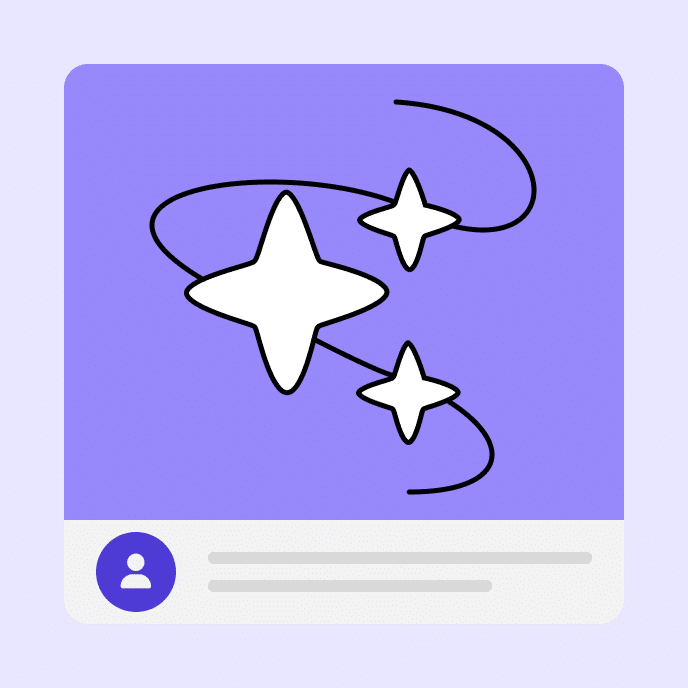Avoid These Open Enrollment Mistakes by Streamlining Your Process
Help your team make smarter health coverage decisions. Avoid open enrollment mistakes with these tips for better communication and benefits guidance.

Open enrollment starts with training, so make it count
For HR professionals, open enrollment isn’t just another administrative task. It’s an opportunity to do some good. When you genuinely care about the people on your team, you are more invested in guiding them toward good choices that directly impact their health, their finances, and their families.
Unfortunately, for many employees, the open enrollment period is a source of stress and confusion. When left to their own devices, workers often choose the path of least resistance: defaulting to last year’s plan, overlooking the health savings account, or missing the fine print on their flexible spending options. But these minor oversights can have lasting implications.
But when HR puts in the time and effort to educate employees about their options, it builds confidence and empowers team members to make informed, effective decisions. In this blog post, we’ll explore the most common open enrollment training mistakes and how you can help your team avoid them so that everyone walks away with the coverage they deserve.
Key Takeaways
- Confidence comes from clarity. When employees understand their choices, they’re far more likely to choose plans that truly fit their needs.
- Health insurance choices are only part of the picture. FSAs and HSAs can be game-changers for managing out-of-pocket costs, but only if employees know how to use them.
- Good communication is a good benefits strategy. Open enrollment is an opportunity to build trust, not just process paperwork.
4 open enrollment mistakes and how to solve them
Mistake 1: Waiting too long to communicate benefits updates
It’s two weeks before the open enrollment season ends, and you’ve just sent out your first email detailing the options and updates to your health insurance benefit offerings. So it’s no surprise that your inbox and chat messages are blowing up with frantic questions:
I’ve already made my selections. Is there any way to change that?
I didn’t realize I needed to take any action.
Why didn’t we get notified about all this sooner?
If you wait until the open enrollment period actually begins to start informing workers about their options, don’t be surprised when chaos ensues. Your team worked hard to put together the best possible benefits package, but all that effort might go to waste if you don’t manage time effectively.
Solutions to communicate proactively and effectively
- Start early. Begin your outreach at least a month before the enrollment period begins, and build momentum by trickling in reminders at regular intervals.
- Keep it simple. Break down options into digestible segments. Create side-by-side comparisons, highlight key deadlines, and provide detailed FAQs.
- Don’t just inform—guide. Notifying employees of their options is the bare minimum. Go a step further by hosting coffee talks, webinars, or Q&As where employees can get the answers they need.
- Create an open enrollment timeline. Determine when to begin planning, researching, launching campaigns, and holding informational sessions in the months before enrollment.

Mistake 2: Assuming employees understand their options
Let’s say you didn’t wait around to start enrollment communications. On the contrary, you and your team were on top of it, crafting a comprehensive benefits guide that you uploaded to the company intranet well in advance, along with an all-staff email urging everyone to review it carefully. You did your due diligence. It’s up to individual employees to compare plans, weigh their pre-tax dollars, and make the right choice for themselves and their families.
But once enrollment ends, the emails come flooding in again. Some didn’t realize eye or dental insurance were options. Others didn’t understand the difference between an FSA and an HSA. What is clear is that many employees didn’t fully understand the options available. This is a frustrating outcome for everyone. What’s worse, it costs employees money and squanders an opportunity for coverage.
According to a 2022 Harris Poll, 72 percent of employees said they wished someone would tell them what the best health insurance policy for their unique situation is. That’s where your training comes in.
Solutions to provide clarity
- Provide multiple touchpoints. Don’t expect one 50-page guide to do the trick. Reinforce key benefits information using different formats, such as short videos, infographics, or microlearning modules.
- Define key terms. Not everyone is familiar with terms like “deductible” or “out-of-pocket” maximum. Explain these as clearly and plainly as possible.
- Use real-life examples. Create scenarios featuring real people that illustrate how different plans work for different situations, such as a single employee vs. a family of four.
- Be available. Keep lines of communication open throughout the enrollment process so employees know who to contact with questions and, more importantly, feel comfortable doing so.
Mistake 3: Letting FSA and HSA opportunities go to waste
Once open enrollment ends and employees start using their new benefits plans, a stark realization sometimes comes to light. Even great health insurance plans don’t cover all medical expenses. For employees, it’s demoralizing to learn that they could’ve saved hundreds—if not thousands—if only they’d opted into a health savings account (HSA) or flexible spending account (FSA).
As an HR professional, you know what a difference this can make in people’s lives. But too often, employees overlook these options because they don’t understand how they work or how they benefit them, leaving them with out-of-pocket medical expenses that could’ve been paid with pre-tax dollars.
Solutions to showcase FSA and HSA options
- Start with the basics. Explain what HSAs and FSAs are, how they differ, and who is eligible.
- Show them the money. Use simple examples to illustrate potential savings. For instance, show the out-of-pocket cost for a procedure not covered under their plan, plus examples of items and services they may not be aware are covered.
- Address the use-it-or-lose-it concern. Some employees might be wary of FSAs or HSAs because of expiration rules. Clarify the grace periods and rollover policies up front.
- Offer comparison tools. Guide employees to any tools, apps, and benefits calculators that might help them understand their savings better and how it fits their budget.
Mistake 4: Don’t gloss over changes to benefits
For employees who are already stressed about the prospect of deciding on a new health plan, there’s plenty of temptation to simply stick with what they had last time. But that doesn’t necessarily mean the benefits remain the same.
Take Tasha, for example. She’s been with the organization for many years, so she opts to simply re-enroll with the same plan she’s always had. But when she goes in for her annual health check in January, she learns that her doctor is no longer in network. All that frustration could’ve been avoided if HR clearly communicated the changes to coverage.
The lesson is clear: don’t assume employees will notice all updates to their plan. Even small changes to premiums, deductibles, provider networks, and coverage can have a big impact on someone’s life. As an HR leader, it’s your responsibility to make sure no one’s caught off guard.
Solutions to highlight changes clearly
- Call out the changes. Give employees an easy-to-read one-page document that highlights the key changes to their plan rather than expecting them to find them buried in the fine print.
- Host an informational session. Hold a virtual or in-person town hall meeting that walks everyone through the updates and changes and gives them opportunities to ask questions.
- Update documentation. Make sure any and all changes are reflected and highlighted in all materials related to health and benefits coverage, and make it easy to compare updates to the previous versions.
- Give them time to digest. Share the updates as early as possible in the enrollment period so employees have time to process the information, review their options, and ask questions.
Help employees make smarter choices this enrollment season
Employee benefits aren’t just a perk. They can have a major impact on people’s lives and well-being. When you help everyone get the most out of them, it shows you prioritize the right things. The open enrollment season doesn’t have to feel like a mad scramble for your HR team or a guessing game for employees. By opening lines of communication early, simplifying the complex, and highlighting the details that matter most, you give employees the confidence to make informed, empowered decisions.
You may also like

Cultural Nuance as a Foundation for Localized Learning
Learn why successful global learning depends on culturally sensitive localization, and explore best practices and tools to enhance learner outcomes.

